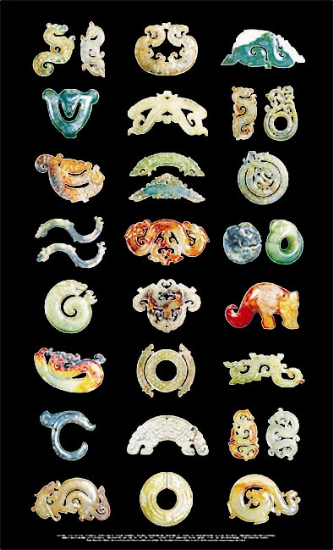

THERE is an animal that is associated with dignity, luck, strength, success, power, majesty and courage in China. All the Chinese emperors would have it painted on their walls and stitched into their clothes.
Yes it’s 龙, long in pinyin, an animal loved and revered by all Chinese. Yet nobody has seen a real 龙, and despite having a vague idea of what it is like, few people know anything about its appearance.
But one thing is known. Although 龙 is translated into “dragon” in English, the Chinese totem is by no means as fierce as the dragon in Western culture.
As it is something uniquely Chinese, there is no equivalence of 龙 in the English language. It’s better to use its pinyin “long” in translation, according to Taiwanese folklorist Huang Yongsong.
龙 is a totem designed by the legendary ancestor of the Chinese people, the Yellow Emperor (Huang Di), more than 4,000 years ago, Huang explained in an interview with Shenzhen magazine Travel.
According to historic records, the Yellow Emperor summoned the leaders of tribes at Fushan (today’s Xushui in Hebei Province) and created the image of 龙 at the summit. It has since been regarded as a totem of the Chinese people.
龙 has the head of a camel, the horns of a deer, the eyes of a rabbit, the ears of a cow, the neck of a snake, the belly of a clam, the skin of a fish, the claws of an eagle and the hands of a tiger, according to Huang.
“It was a great design, and the Yellow Emperor was a great designer,” Huang said.
And the sound of 龙 came from the Chinese character 笼 (cage), Huang said.
According to Xushui legend, when the tribe leaders attended the summit summoned by the Yellow Emperor, they brought animals with them. The animals were put in cages, and so the totem was called 龙, which sounds the same as 笼, Huang said.
龙 is the surname of most villagers in Fushan, according to Huang.
The totem of 龙 has since been handed down by the Chinese and respected in many East Asian countries.
龙 is by no means a direct translation of the word “dragon.” The Webster dictionary describes dragon as a mythical animal usually represented as a monstrous winged and scaly serpent or saurian with a crested head and enormous claws.
“So 龙 should not be translated as dragon,” said Huang.
“This year is the Year of the Dragon. It’s time for us to understand the true meaning of 龙,” said Huang.
An exhibition featuring Chinese 龙, Correcting the Image of Long, will conclude this weekend at Shenzhen Book City CBD store. But it will tour the city in the coming months. More exhibitions featuring 龙 can be expected at the Shenzhen Book City in the year.(Helen Deng)
|

